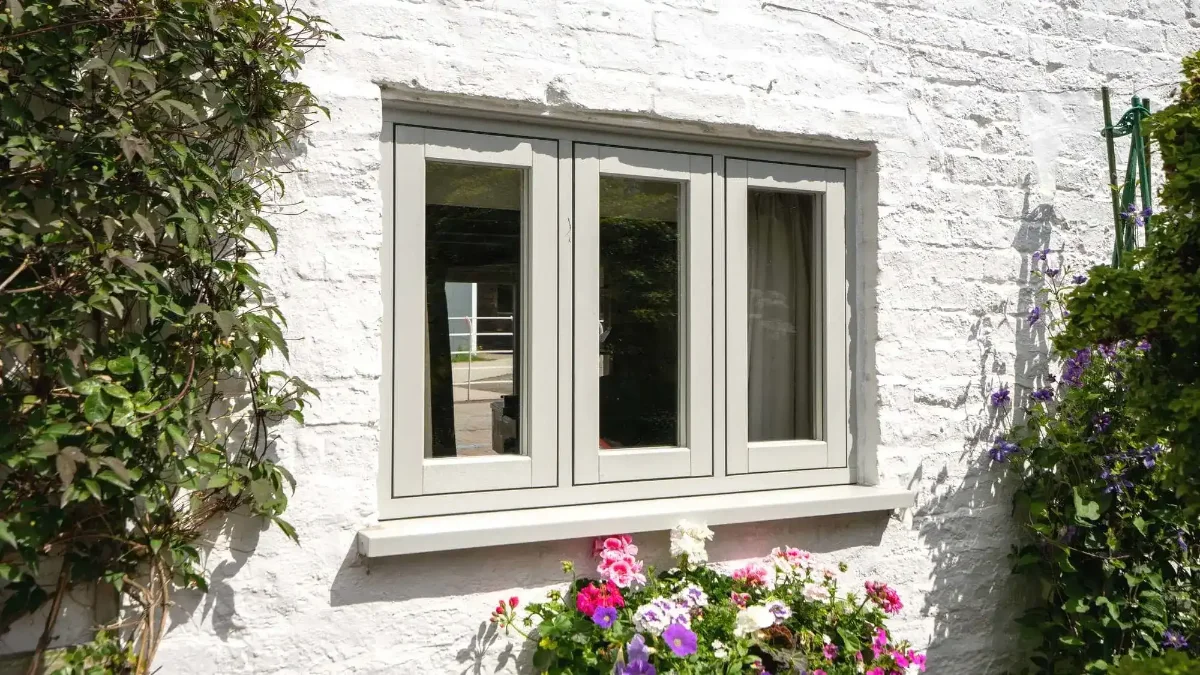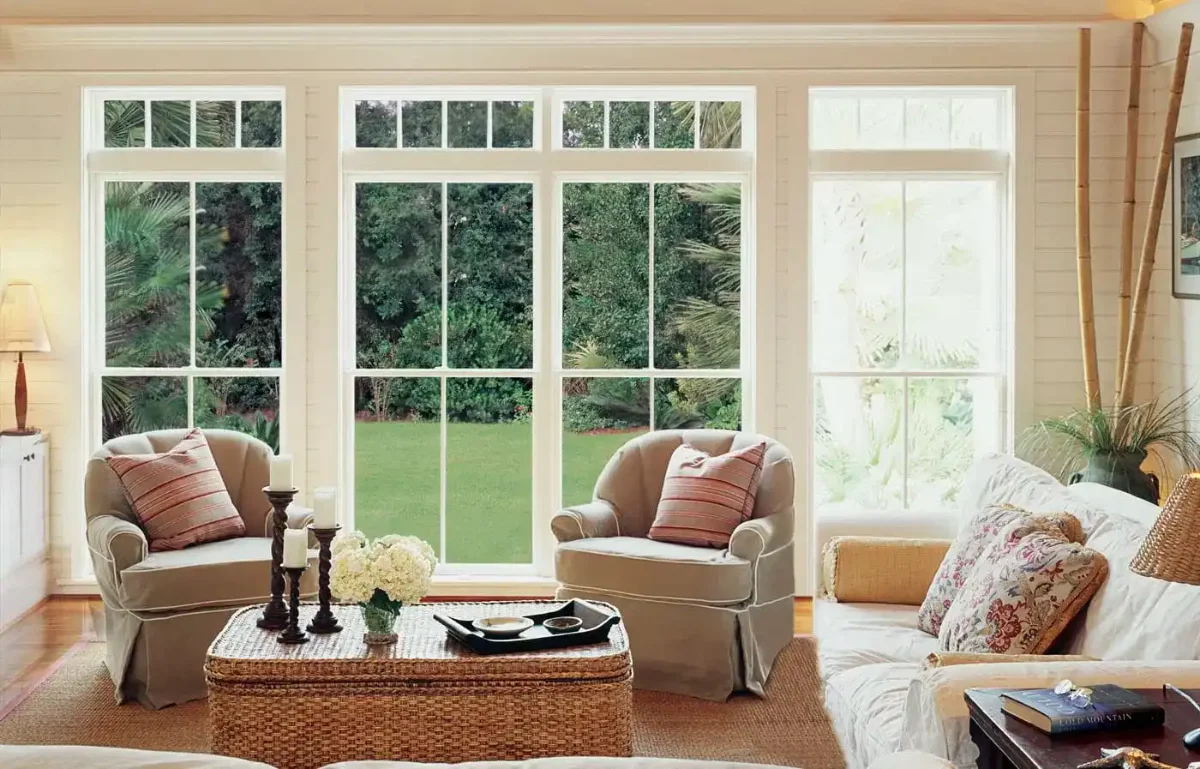The Morning Mystery: When Windows Weep
“Every morning, our bedroom windows are streaming with water,” explained Janet Morrison, standing in her Victorian terrace in Sawbridgeworth. “The sills are soaked, the wallpaper’s peeling, and there’s a musty smell developing. Are our new double-glazed windows faulty?”
I’ve heard this concern hundreds of times over nearly four decades in the window industry. The irony? Janet’s windows were working perfectly. The real culprit was hiding in plain sight—the daily routines of a busy family creating moisture faster than their home could remove it.
Six months later, after implementing a targeted moisture management strategy, Janet’s windows stay clear, her home feels fresher, and the musty odors have disappeared. The solution didn’t require new windows—it required understanding the complex relationship between indoor humidity, temperature, and ventilation.
Window condensation isn’t just an inconvenience—it’s your home’s way of telling you about moisture imbalances that can lead to serious structural damage, health issues, and energy waste. But here’s the good news: most condensation problems are entirely solvable once you understand what’s really happening.
Let me share what I’ve learned about diagnosing, solving, and preventing window condensation in UK homes.
Understanding Condensation: The Science Made Simple
Condensation occurs when warm, moisture-laden air meets a surface cold enough to drop the air temperature below its dew point. Think of it as nature’s way of wringing water from the air—like squeezing a wet sponge.
The Basic Physics
Warm air holds more moisture than cold air. When humid indoor air contacts a cold window surface, it cools rapidly and releases excess moisture as water droplets. The warmer and more humid your indoor air, and the colder your window surfaces, the more condensation you’ll see.
Why Windows Are Condensation Magnets
Windows are typically the coldest surfaces in your home because:
- Thin profiles compared to insulated walls
- Direct contact with outdoor temperatures
- Large surface areas exposed to room air
- Thermal bridging through frames and glazing bars
Even high-performance double glazing will be colder than room temperature on winter mornings, making some condensation almost inevitable in humid conditions.
The Three Types of Window Condensation
Not all condensation is created equal. Understanding which type you’re dealing with determines the appropriate solution:
1. Internal Condensation (Room-Side Glass)
What it looks like: Water droplets on the inside surface of your windows, typically worst in mornings What it means: High indoor humidity meeting cold glass surfaces Severity: Usually manageable with lifestyle and ventilation changes
Common causes:
- Cooking, showering, and breathing without adequate ventilation
- Drying clothes indoors
- Houseplants (especially large numbers)
- Unvented tumble dryers
- Poor heating patterns leaving surfaces cold
2. External Condensation (Outside Glass)
What it looks like: Dew or frost on the outside of your windows, usually early morning What it means: Your windows are well-insulated! Outdoor humidity condensing on cold exterior surfaces Severity: Actually a good sign—indicates effective insulation
Why it happens:
- Clear, cold nights allow window surfaces to cool below dew point
- High-performance glazing stays cold on the outside
- More common with energy-efficient windows
- Usually disappears as sun warms the glass
3. Interstitial Condensation (Between Glass Panes)
What it looks like: Misty or cloudy appearance between double glazing panes, doesn’t wipe away What it means: Failed window seals allowing moisture into the sealed unit Severity: Requires professional attention—indicates window failure
The problem:
- Broken perimeter seals allow humid air into the cavity
- Temperature differences cause condensation inside the sealed unit
- Desiccant materials become saturated and ineffective
- Progressive deterioration of insulation performance
Janet’s Case Study: Solving Severe Bedroom Condensation
Janet’s Victorian terrace presented classic condensation challenges. Here’s how we diagnosed and solved her problem:
The Investigation
Symptoms observed:
- Heavy condensation every morning on bedroom windows
- Water pooling on wooden sills
- Wallpaper peeling around window reveals
- Musty odors in the room
- Black spots appearing on window frames
Measurements taken:
- Indoor relative humidity: 68% (should be 40-60%)
- Room temperature variations: 16°C overnight, 21°C during day
- Ventilation assessment: Inadequate air changes per hour
- Moisture sources identified: Ensuite bathroom, clothes drying, houseplants
The Root Causes
- Lifestyle factors: Family of four creating 12-15 liters of moisture daily
- Ventilation inadequacy: Original Victorian ventilation blocked or removed
- Heating patterns: Thermostat setback overnight creating cold surfaces
- Bathroom humidity: Ensuite shower moisture migrating to bedroom
- Thermal performance: Single-glazed sash windows recently replaced with double glazing (good) but room still poorly insulated
The Solution Strategy
Phase 1: Immediate Moisture Control
- Bathroom extractor fan upgraded and timer installed
- Bedroom door kept closed during and after showers
- Clothes drying moved to utility room
- Three large houseplants relocated to living areas
Phase 2: Ventilation Improvements
- Trickle vents installed in new window frames
- Positive input ventilation (PIV) system added to loft
- Humidity-controlled extractor fans in bathroom and kitchen
- Regular window opening schedule established
Phase 3: Heating Optimization
- Overnight temperature maintained at 18°C minimum
- Radiator repositioned away from window wall
- Thermal curtains installed with proper clearance
- Room insulation improved where possible
The Results
After 6 months:
- Morning condensation reduced by 90%
- Indoor humidity stabilized at 45-55%
- Wallpaper damage stopped progressing
- Musty odors eliminated
- Window frames showing no further deterioration
Janet’s feedback: “I wish we’d understood this from the beginning. The windows weren’t the problem—we just needed to manage moisture better. Now the bedroom feels fresh every morning.”
DIY Solutions: What You Can Do Today
Many condensation problems respond well to immediate action:
Quick Wins (Cost: £0-£50)
Improve ventilation habits:
- Open windows for 10-15 minutes each morning
- Use extractor fans during and after cooking/showering
- Keep internal doors closed when generating moisture
- Wipe down wet surfaces immediately
Reduce moisture sources:
- Move clothes drying outdoors or to well-ventilated areas
- Reduce houseplant numbers or group them away from windows
- Fix any plumbing leaks promptly
- Cover pans when cooking
Optimize heating:
- Maintain consistent temperatures (avoid large setbacks)
- Ensure adequate background heating overnight
- Position furniture away from external walls
- Close curtains only after windows warm up
Medium-Term Improvements (Cost: £50-£500)
Ventilation upgrades:
- Install or upgrade bathroom/kitchen extractor fans
- Add trickle vents to existing windows
- Consider positive input ventilation (PIV) systems
- Improve loft ventilation to reduce whole-house humidity
Dehumidification:
- Portable dehumidifiers for problem rooms
- Ensure tumble dryers vent externally
- Consider desiccant dehumidifiers for colder areas
- Monitor and maintain target humidity levels (40-60%)
Window treatments:
- Thermal curtains with proper clearance from glass
- Venetian blinds allowing air circulation
- Avoid heavy curtains tight against windows
- Consider secondary glazing for single-glazed windows
When to Call Professionals: Serious Condensation Issues
Some condensation problems require expert intervention:
Failed Double Glazing
Signs: Persistent misting between glass panes that doesn’t clear Solution: Glazed unit replacement (typically £150-£400 per window) Urgency: Moderate—affects insulation performance but not structural
What’s involved:
- Remove failed glazed unit from frame
- Clean and inspect frame condition
- Install new sealed unit with fresh desiccant
- Test seals and adjust if necessary
Structural Moisture Problems
Signs: Condensation accompanied by:
- Timber frame rot or decay
- Persistent mold growth
- Wallpaper or paint failure
- Musty odors that don’t respond to ventilation
Professional assessment needed for:
- Building fabric issues causing cold spots
- Inadequate wall insulation creating thermal bridges
- Structural ventilation problems
- Damp proof course failures
Whole-House Humidity Issues
When to seek help:
- Condensation throughout the property
- Humidity levels consistently above 65%
- Health symptoms (respiratory issues, allergies)
- Previous solutions haven’t worked
Professional solutions might include:
- Whole-house mechanical ventilation systems
- Building fabric improvements
- Heating system optimization
- Comprehensive moisture management strategies
Prevention Strategies: Stopping Problems Before They Start
The best condensation cure is prevention. Here’s how to maintain the right balance:
Daily Habits That Make a Difference
Morning routine:
- Open bedroom windows for 10-15 minutes
- Run bathroom extractor during and 30 minutes after showering
- Wipe down any condensation immediately
- Check humidity levels if you have a monitor
Cooking and cleaning:
- Use lids on pans to reduce steam
- Run kitchen extractor fan during cooking
- Dry washing outdoors when possible
- Clean up spills and wet surfaces promptly
Evening routine:
- Check all rooms for excess humidity
- Ensure adequate heating overnight
- Close curtains only after windows warm up
- Monitor weather forecasts for high humidity nights
Seasonal Adjustments
Winter (High Risk Period):
- Increase ventilation despite cold weather
- Maintain consistent heating
- Monitor humidity levels more closely
- Be extra vigilant about moisture sources
Spring/Autumn (Transition Periods):
- Adjust heating patterns gradually
- Watch for condensation during temperature swings
- Prepare ventilation systems for seasonal changes
- Address any damage from winter condensation
Summer (Low Risk Period):
- Service and clean ventilation systems
- Address any structural issues identified
- Plan improvements for next winter
- Monitor for external condensation on efficient windows
The Cost of Ignoring Condensation
Persistent window condensation isn’t just unsightly—it can lead to expensive problems:
Immediate Damage (Weeks to Months)
- Paint and wallpaper failure: £200-£800 per room to redecorate
- Soft furnishing damage: Curtains, carpets, furniture affected
- Window frame deterioration: Particularly problematic for timber
- Health impacts: Increased allergens and respiratory irritants
Long-Term Consequences (Months to Years)
- Structural timber decay: £1,000-£5,000+ for frame replacement
- Wall insulation degradation: Reduced thermal performance
- Mold remediation: £500-£2,000 for professional treatment
- Property value impact: Visible moisture damage affects saleability
Hidden Costs
- Increased heating bills: Moisture reduces insulation effectiveness
- Health-related expenses: Respiratory problems, allergies
- Insurance implications: Some policies exclude moisture-related damage
- Reduced comfort: Unpleasant living conditions
Modern Solutions: Technology That Helps
New technologies make condensation management easier and more effective:
Smart Monitoring
Wireless humidity sensors: Track conditions in multiple rooms Smart thermostats: Maintain optimal temperatures automatically Air quality monitors: Alert to high humidity levels Mobile apps: Remote monitoring and control of ventilation systems
Advanced Ventilation
Heat recovery ventilation: Fresh air without heat loss Demand-controlled systems: Automatic adjustment based on humidity Smart extractor fans: Humidity-sensing activation Positive input ventilation: Whole-house moisture management
High-Performance Windows
Triple glazing: Warmer internal surfaces reduce condensation risk Warm-edge spacers: Eliminate cold spots around glazing perimeter Insulated frames: Reduce thermal bridging and cold surfaces Integrated ventilation: Trickle vents and controlled air paths
Making Your Action Plan
Based on your specific condensation patterns, here’s how to prioritize solutions:
High Humidity Throughout House
- Install whole-house ventilation (PIV or MVHR system)
- Upgrade bathroom and kitchen extraction
- Address major moisture sources (drying, cooking, breathing)
- Consider dehumidification in worst-affected rooms
Localized Problem Rooms
- Improve local ventilation (extractor fans, trickle vents)
- Optimize heating patterns in affected areas
- Reduce local moisture sources
- Consider room-specific dehumidifiers
Failed Double Glazing
- Replace failed glazed units promptly
- Check other windows for early signs of failure
- Address underlying humidity issues to prevent recurrence
- Consider upgrading to higher-performance glazing
For expert assessment of your condensation problems and tailored solutions, our window repair specialists can provide comprehensive moisture management advice alongside any necessary window maintenance.
The Bottom Line: Clear Windows, Healthy Homes
Window condensation is rarely about faulty windows—it’s usually about the balance between moisture, temperature, and ventilation in your home. Like Janet’s family discovered, the right combination of understanding, simple changes, and targeted improvements can transform problem windows into clear, comfortable surfaces.
The key is recognizing that condensation is a symptom, not a disease. Address the underlying causes—excess humidity, inadequate ventilation, or thermal performance issues—and the symptoms disappear.
Experiencing persistent window condensation? Contact our moisture management experts for professional assessment, targeted solutions, and peace of mind that your windows and home are protected from moisture damage.
Because clear windows aren’t just about the view—they’re about creating healthy, comfortable homes that protect your family and your investment for years to come.
Your windows are trying to tell you something. Are you ready to listen?



![Timber Window Maintenance Checklist [Bishop's Stortford 2025]](/images/windowsbishopsstortford-blogimages/timber_compressed-geotagged.webp)
